Volcano
A volcano is an opening, or rupture, in a planet's surface or crust, which allows hot, molten rock, ash, and gases to escape from below the surface. Volcanic activity involving the extrusion of rock tends to form mountains or features like mountains over a period of time.Volcanoes are generally found where tectonic plates are pulled apart or come together. A mid-oceanic ridge, for example the Mid-Atlantic Ridge, has examples of volcanoes caused by "divergent tectonic plates" pulling apart; the Pacific Ring of Fire has examples of volcanoes caused by "convergent tectonic plates" coming together. By contrast, volcanoes are usually not created where two tectonic plates slide past one another. Volcanoes can also form where there is stretching and thinning of the Earth's crust (called "non-hotspot intraplate volcanism"), such as in the African Rift Valley, the Wells Gray-Clearwater Volcanic Field and the Rio Grande Rift in North America and the European Rhine Graben with its Eifel volcanoes.
Volcanoes can be caused by "mantle plumes". These so-called "hotspots" , for example at Hawaii, can occur far from plate boundaries. Hotspot volcanoes are also found elsewhere in the solar system, especially on rocky planets and moons.
| Cross-section through a stratovolcano: | |
|---|---|
| 1. Large magma chamber 2. Bedrock 3. Conduit (pipe) 4. Base 5. Sill 6. Branch pipe 7. Layers of ash emitted by the volcano 8. Flank | 9. Layers of lava emitted by the volcano 10. Throat 11. Parasitic cone 12. Lava flow 13. Vent 14. Crater 15. Ash cloud |
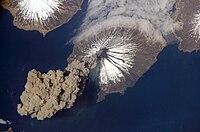
Plate tectonics and hotspots
Divergent plate boundaries
At the mid-oceanic ridges, two tectonic plates diverge from one another. New oceanic crust is being formed by hot molten rock slowly cooling and solidifying. The crust is very thin at mid-oceanic ridges due to the pull of the tectonic plates. The release of pressure due to the thinning of the crust leads to adiabatic expansion, and the partial melting of the mantle causing volcanism and creating new oceanic crust. Most divergent plate boundaries are at the bottom of the oceans, therefore most volcanic activity is submarine, forming new seafloor. Black smokers or deep sea vents are an example of this kind of volcanic activity. Where the mid-oceanic ridge is above sea-level, volcanic islands are formed, for example, Iceland.
Convergent plate boundaries
Subduction zones are places where two plates, usually an oceanic plate and a continental plate, collide. In this case, the oceanic plate subducts, or submerges under the continental plate forming a deep ocean trench just offshore. The crust is then melted by the heat from the mantle and becomes magma. This is due to the water content lowering the melting temperature. The magma created here tends to be very viscous due to its high silica content, so often does not reach the surface and cools at depth. When it does reach the surface, a volcano is formed. Typical examples for this kind of volcano are Mount Etna and the volcanoes in the Pacific Ring of Fire.
Hotspots
Hotspots are not usually located on the ridges of tectonic plates, but above mantle plumes, where the convection of Earth's mantle creates a column of hot material that rises until it reaches the crust, which tends to be thinner than in other areas of the Earth. The temperature of the plume causes the crust to melt and form pipes, which can vent magma. Because the tectonic plates move whereas the mantle plume remains in the same place, each volcano becomes dormant after a while and a new volcano is then formed as the plate shifts over the hotspot. The Hawaiian Islands are thought to be formed in such a manner, as well as the Snake River Plain, with the Yellowstone Caldera being the part of the North American plate currently above the hotspot.
Volcanic features
The most common perception of a volcano is of a conical mountain, spewing lava and poisonous gases from a crater at its summit. This describes just one of many types of volcano, and the features of volcanoes are much more complicated. The structure and behavior of volcanoes depends on a number of factors. Some volcanoes have rugged peaks formed by lava domes rather than a summit crater, whereas others present landscape features such as massive plateaus. Vents that issue volcanic material (lava, which is what magma is called once it has escaped to the surface, and ash) and gases (mainly steam and magmatic gases) can be located anywhere on the landform. Many of these vents give rise to smaller cones such as Puʻu ʻŌʻō on a flank of Hawaii's Kīlauea.
Other types of volcano include cryovolcanoes (or ice volcanoes), particularly on some moons of Jupiter, Saturn and Neptune; and mud volcanoes, which are formations often not associated with known magmatic activity. Active mud volcanoes tend to involve temperatures much lower than those of igneous volcanoes, except when a mud volcano is actually a vent of an igneous volcano.

Shield volcanoes
Shield volcanoes, so named for their broad, shield-like profiles, are formed by the eruption of low-viscosity lavas that can flow a great distance from a vent, but not generally explode catastrophically. The Hawaiian volcanic chain is a series of shield cones, and they are common in Iceland, as well.
Lava domes
eruptions of highly viscous lavas. They are sometimes formed within the crater of a previous volcanic eruption (as in Mount Saint Helens), but can also form independently, as in the case of Lassen Peak. Like stratovolcanoes, they can produce violent, explosive eruptions, but their lavas generally do not flow far from the originating vent.
Cinder cones
Volcanic cones or cinder cones result from eruptions that erupt mostly small pieces of scoria and pyroclastics (both resemble cinders, hence the name of this volcano type) that build up around the vent. These can be relatively short-lived eruptions that produce a cone-shaped hill perhaps 30 to 400 meters high. Most cinder cones erupt only once. Cinder cones may form as flank vents on larger volcanoes, or occur on their own. Parícutin in Mexico and Sunset Crater in Arizona are examples of cinder cones.
Stratovolcanoes (composite volcano)
Stratovolcanoes are tall conical mountains composed of lava flows and other ejecta in alternate layers, the strata that give rise to the name. Stratovolcanoes are also known as composite volcanoes. Strato/composite volcanoes are made of cinders, ash and lava. The volcanoes are made by another volcano. Cinders and ash pile on top of each other, then lava flows on top and dries and then the process begins again. Classic examples include Mt. Fuji in Japan, Mount Mayon in the Philippines, and Mount Vesuvius and Stromboli in Italy. Within a relatively short geologic time scale stratovolcanoes are more dangerous (see stratovolcano for a list of dangers).
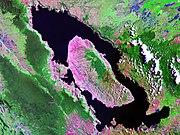
Supervolcanoes
Supervolcano is the popular term for a large volcano that usually has a large caldera and can potentially produce devastation on an enormous, sometimes continental, scale. Such eruptions would be able to cause severe cooling of global temperatures for many years afterwards because of the huge volumes of sulfur and ash erupted. They are the most dangerous type of volcano. Examples include Yellowstone Caldera in Yellowstone National Park of western USA, Lake Taupo in New Zealand and Lake Toba in Sumatra, Indonesia. Supervolcanoes are hard to identify centuries later, given the enormous areas they cover. Large igneous provinces are also considered supervolcanoes because of the vast amount of basalt lava erupted, but they are non-explosive because only non-explosive eruptions such as Kilauea produce basalt lava.
Submarine volcanoes
Submarine volcanoes are common features on the ocean floor. Some are active and, in shallow water, disclose their presence by blasting steam and rocky debris high above the surface of the sea. Many others lie at such great depths that the tremendous weight of the water above them prevents the explosive release of steam and gases, although they can be detected by hydrophones and discoloration of water because of volcanic gases. Pumice rafts may also appear. Even large submarine eruptions may not disturb the ocean surface. Because of the rapid cooling effect of water as compared to air, and increased buoyancy, submarine volcanoes often form rather steep pillars over their volcanic vents as compared to above-surface volcanoes. They may become so large that they break the ocean surface as new islands. Pillow lava is a common eruptive product of submarine volcanoes.
Subglacial volcanoes
Subglacial volcanoes develop underneath icecaps. They are made up of flat lava flows atop extensive pillow lavas and palagonite. When the icecap melts, the lavas on the top collapse leaving a flat-topped mountain. Then, the pillow lavas also collapse, giving an angle of 37.5 degrees[citation needed]. These volcanoes are also called table mountains, tuyas or (uncommonly) mobergs. Very good examples of this type of volcano can be seen in Iceland, however, there are also tuyas in British Columbia. The origin of the term comes from Tuya Butte, which is one of the several tuyas in the area of the Tuya River and Tuya Range in northern British Columbia. Tuya Butte was the first such landform analyzed and so its name has entered the geological literature for this kind of volcanic formation. The Tuya Mountains Provincial Park was recently established to protect this unusual landscape, which lies north of Tuya Lake and south of the Jennings River near the boundary with the Yukon Territory.
Antarctica eruption
In January, 2008, the British Antarctic Survey (Bas) scientists led by Hugh Corr and David Vaughan, reported (in the journal Nature Geoscience) that 2,200 years ago, a volcano erupted under Antarctica ice sheet (based on airborne survey with radar images). The biggest eruption in the last 10,000 years, the volcanic ash was found deposited on the ice surface under the Hudson Mountains, close to Pine Island Glacier.[1]
Erupted material
Lava composition
Another way of classifying volcanoes is by the composition of material erupted (lava), since this affects the shape of the volcano. Lava can be broadly classified into 4 different compositions (Cas & Wright, 1987):
- If the erupted magma contains a high percentage (>63%) of silica, the lava is called felsic.
- Felsic lavas (or rhyolites) tend to be highly viscous (not very fluid) and are erupted as domes or short, stubby flows. Viscous lavas tend to form stratovolcanoes or lava domes. Lassen Peak in California is an example of a volcano formed from felsic lava and is actually a large lava dome.
- Because siliceous magmas are so viscous, they tend to trap volatiles (gases) that are present, which cause the magma to erupt catastrophically, eventually forming stratovolcanoes. Pyroclastic flows (ignimbrites) are highly hazardous products of such volcanoes, since they are composed of molten volcanic ash too heavy to go up into the atmosphere, so they hug the volcano's slopes and travel far from their vents during large eruptions. Temperatures as high as 1,200 °C are known to occur in pyroclastic flows, which will incinerate everything flammable in their path and thick layers of hot pyroclastic flow deposits can be laid down, often up to many meters thick. Alaska's Valley of Ten Thousand Smokes, formed by the eruption of Novarupta near Katmai in 1912, is an example of a thick pyroclastic flow or ignimbrite deposit. Volcanic ash that is light enough to be erupted high into the Earth's atmosphere may travel many kilometres before it falls back to ground as a tuff.
- If the erupted magma contains 52–63% silica, the lava is of intermediate composition.
- These "andesitic" volcanoes generally only occur above subduction zones (e.g. Mount Merapi in Indonesia).
- If the erupted magma contains <52%>45% silica, the lava is called mafic (because it contains higher percentages of magnesium (Mg) and iron (Fe)) or basaltic. These lavas are usually much less viscous than rhyolitic lavas, depending on their eruption temperature; they also tend to be hotter than felsic lavas. Mafic lavas occur in a wide range of settings:
- At mid-ocean ridges, where two oceanic plates are pulling apart, basaltic lava erupts as pillows to fill the gap;
- Shield volcanoes (e.g. the Hawaiian Islands, including Mauna Loa and Kilauea), on both oceanic and continental crust;
- As continental flood basalts.
- Some erupted magmas contain <=45% silica and produce ultramafic lava. Ultramafic flows, also known as komatiites, are very rare; indeed, very few have been erupted at the Earth's surface since the Proterozoic, when the planet's heat flow was higher. They are (or were) the hottest lavas, and probably more fluid than common mafic lavas.
Lava texture
Two types of lava are named according to the surface texture: ʻAʻa (pronounced [ʔaʔa]) and pāhoehoe (pronounced IPA: [[Help:IPA|paːhoehoe]]), both words having Hawaiian origins. ʻAʻa is characterized by a rough, clinkery surface and is what most viscous and hot lava flows look like. However, even basaltic or mafic flows can be erupted as ʻaʻa flows, particularly if the eruption rate is high and the slope is steep. Pāhoehoe is characterized by its smooth and often ropey or wrinkly surface and is generally formed from more fluid lava flows. Usually, only mafic flows will erupt as pāhoehoe, since they often erupt at higher temperatures or have the proper chemical make-up to allow them to flow at a higher fluidity.
Volcanic activity
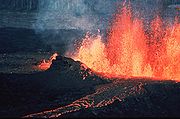
A popular way of classifying magmatic volcanoes is by their frequency of eruption, with those that erupt regularly called active, those that have erupted in historical times but are now quiet called dormant, and those that have not erupted in historical times called extinct. However, these popular classifications—extinct in particular—are practically meaningless to scientists. They use classifications which refer to a particular volcano's formative and eruptive processes and resulting shapes, which was explained above.
There is no real consensus among volcanologists on how to define an "active" volcano. The lifespan of a volcano can vary from months to several million years, making such a distinction sometimes meaningless when compared to the lifespans of humans or even civilizations. For example, many of Earth's volcanoes have erupted dozens of times in the past few thousand years but are not currently showing signs of eruption. Given the long lifespan of such volcanoes, they are very active. By human lifespans, however, they are not.
Scientists usually consider a volcano to be active if it is currently erupting or showing signs of unrest, such as unusual earthquake activity or significant new gas emissions. Many scientists also consider a volcano active if it has erupted in historic time. It is important to note that the span of recorded history differs from region to region; in the Mediterranean, recorded history reaches back more than 3,000 years but in the Pacific Northwest of the United States, it reaches back less than 300 years, and in Hawaii, little more than 200 years. The Smithsonian Global Volcanism Program's definition of 'active' is having erupted within the last 10,000 years.
Dormant volcanoes are those that are not currently active (as defined above), but could become restless or erupt again. Confusion however, can arise because many volcanoes which scientists consider to be active are referred to as dormant by laypersons or in the media.
Extinct volcanoes are those that scientists consider unlikely to erupt again, because the volcano no longer has a lava supply anymore. Examples of extinct volcanoes are many volcanoes on the Hawaiian Islands in the U.S. (extinct because the Hawaii hotspot is centered near the Big Island), and Paricutin, which is monogenetic. Otherwise, whether a volcano is truly extinct is often difficult to determine. Since "supervolcano" calderas can have eruptive lifespans sometimes measured in millions of years, a caldera that has not produced an eruption in tens of thousands of years is likely to be considered dormant instead of extinct. For example, the Yellowstone Caldera in Yellowstone National Park is at least 2 million years old and hasn't erupted violently for approximately 640,000 years, although there has been some minor activity relatively recently, with hydrothermal eruptions less than 10,000 years ago and lava flows about 70,000 years ago. For this reason, scientists do not consider the Yellowstone Caldera extinct. In fact, because the caldera has frequent earthquakes, a very active geothermal system (i.e. the entirety of the geothermal activity found in Yellowstone National Park), and rapid rates of ground uplift, many scientists consider it to be an active volcano.
Notable volcanoes
The 16 current Decade Volcanoes are:
Effects of volcanoes
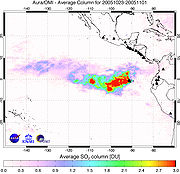
There are many different kinds of volcanic activity and eruptions: phreatic eruptions (steam-generated eruptions), explosive eruption of high-silica lava (e.g., rhyolite), effusive eruption of low-silica lava (e.g., basalt), pyroclastic flows, lahars (debris flow) and carbon dioxide emission. All of these activities can pose a hazard to humans. Earthquakes, hot springs, fumaroles, mud pots and geysers often accompany volcanic activity.
The concentrations of different volcanic gases can vary considerably from one volcano to the next. Water vapor is typically the most abundant volcanic gas, followed by carbon dioxide and sulfur dioxide. Other principal volcanic gases include hydrogen sulfide, hydrogen chloride, and hydrogen fluoride. A large number of minor and trace gases are also found in volcanic emissions, for example hydrogen, carbon monoxide, halocarbons, organic compounds, and volatile metal chlorides.
Large, explosive volcanic eruptions inject water vapor (H2O), carbon dioxide (CO2), sulfur dioxide (SO2), hydrogen chloride (HCl), hydrogen fluoride (HF) and ash (pulverized rock and pumice) into the stratosphere to heights of 16–32 kilometres (10–20 mi) above the Earth's surface. The most significant impacts from these injections come from the conversion of sulfur dioxide to sulfuric acid (H2SO4), which condenses rapidly in the stratosphere to form fine sulfate aerosols. The aerosols increase the Earth's albedo—its reflection of radiation from the Sun back into space - and thus cool the Earth's lower atmosphere or troposphere; however, they also absorb heat radiated up from the Earth, thereby warming the stratosphere. Several eruptions during the past century have caused a decline in the average temperature at the Earth's surface of up to half a degree (Fahrenheit scale) for periods of one to three years. The sulfate aerosols also promote complex chemical reactions on their surfaces that alter chlorine and nitrogen chemical species in the stratosphere. This effect, together with increased stratospheric chlorine levels from chlorofluorocarbon pollution, generates chlorine monoxide (ClO), which destroys ozone (O3). As the aerosols grow and coagulate, they settle down into the upper troposphere where they serve as nuclei for cirrus clouds and further modify the Earth's radiation balance. Most of the hydrogen chloride (HCl) and hydrogen fluoride (HF) are dissolved in water droplets in the eruption cloud and quickly fall to the ground as acid rain. The injected ash also falls rapidly from the stratosphere; most of it is removed within several days to a few weeks. Finally, explosive volcanic eruptions release the greenhouse gas carbon dioxide and thus provide a deep source of carbon for biogeochemical cycles.
Gas emissions from volcanoes are a natural contributor to acid rain. Volcanic activity releases about 130 to 230 teragrams (145 million to 255 million short tons) of carbon dioxide each year.[2] Volcanic eruptions may inject aerosols into the Earth's atmosphere. Large injections may cause visual effects such as unusually colorful sunsets and affect global climate mainly by cooling it. Volcanic eruptions also provide the benefit of adding nutrients to soil through the weathering process of volcanic rocks. These fertile soils assist the growth of plants and various crops. Volcanic eruptions can also create new islands, as the magma cools and solidifies upon contact with the water.
Volcanoes on other planetary bodies

The Earth's Moon has no large volcanoes and no current volcanic activity, although recent evidence suggests it may still possess a partially molten core.[3] However, the Moon does have many volcanic features such as maria (the darker patches seen on the moon), rilles and domes.
The planet Venus has a surface that is 90% basalt, indicating that volcanism played a major role in shaping its surface. The planet may have had a major global resurfacing event about 500 million years ago,[4] from what scientists can tell from the density of impact craters on the surface. Lava flows are widespread and forms of volcanism not present on Earth occur as well. Changes in the planet's atmosphere and observations of lightning, have been attributed to ongoing volcanic eruptions, although there is no confirmation of whether or not Venus is still volcanically active. However, radar sounding by the Magellan probe revealed evidence for comparatively recent volcanic activity at Venus's highest volcano Maat Mons, in the form of ash flows near the summit and on the northern flank.
There are several extinct volcanoes on Mars, four of which are vast shield volcanoes far bigger than any on Earth. They include Arsia Mons, Ascraeus Mons, Hecates Tholus, Olympus Mons, and Pavonis Mons. These volcanoes have been extinct for many millions of years,[5] but the European Mars Express spacecraft has found evidence that volcanic activity may have occurred on Mars in the recent past as well.[5]
Jupiter's moon Io is the most volcanically active object in the solar system because of tidal interaction with Jupiter. It is covered with volcanoes that erupt sulfur, sulfur dioxide and silicate rock, and as a result, Io is constantly being resurfaced. Its lavas are the hottest known anywhere in the solar system, with temperatures exceeding 1,800 K (1,500 °C). In February 2001, the largest recorded volcanic eruptions in the solar system occurred on Io.[6] Europa, the smallest of Jupiter's Galilean moons, also appears to have an active volcanic system, except that its volcanic activity is entirely in the form of water, which freezes into ice on the frigid surface. This process is known as cryovolcanism, and is apparently most common on the moons of the outer planets of the solar system.
In 1989 the Voyager 2 spacecraft observed cryovolcanoes (ice volcanoes) on Triton, a moon of Neptune, and in 2005 the Cassini-Huygens probe photographed fountains of frozen particles erupting from Enceladus, a moon of Saturn.[7] The ejecta may be composed of water, liquid nitrogen, dust, or methane compounds. Cassini-Huygens also found evidence of a methane-spewing cryovolcano on the Saturnian moon Titan, which is believed to be a significant source of the methane found in its atmosphere.[8] It is theorized that cryovolcanism may also be present on the Kuiper Belt Object Quaoar.
Etymology
Volcano is thought to derive from Vulcano, a volcanic island in the Aeolian Islands of Italy whose name in turn originates from Vulcan, the name of a god of fire in Roman mythology. The study of volcanoes is called volcanology, sometimes spelled vulcanology.
The Roman name for the island Vulcano has contributed the word for volcano in most modern European languages.
In culture
Past beliefs

Many ancient accounts ascribe volcanic eruptions to supernatural causes, such as the actions of gods or demigods. To the ancient Greeks, volcanoes' capricious power could only be explained as acts of the gods, while 16th/17th-century German astronomer Johannes Kepler believed they were ducts for the Earth's tears. [9] One early idea counter to this was proposed by Jesuit Athanasius Kircher (1602–1680), who witnessed eruptions of Mount Etna and Stromboli, then visited the crater of Vesuvius and published his view of an Earth with a central fire connected to numerous others caused by the burning of sulfur, bitumen and coal.
Various explanations were proposed for volcano behavior before the modern understanding of the Earth's mantle structure as a semisolid material was developed. For decades after awareness that compression and radioactive materials may be heat sources, their contributions were specifically discounted. Volcanic action was often attributed to chemical reactions and a thin layer of molten rock near the surface.
Heraldry
Volcanoes appear as a charge in heraldry.
Panoramas

Pacific Ring of Fire
In a 40,000 km horseshoe shape, it is associated with a nearly continuous series of oceanic trenches, volcanic arcs, and volcanic belts and/or plate movements. The Ring of Fire has 452 volcanoes and is home to over 75% of the world's active and dormant volcanoes. It is sometimes called the circum-Pacific belt or the circum-Pacific seismic belt.
Ninety percent of the world's earthquakes and 80% of the world's largest earthquakes occur along the Ring of Fire. The next most seismic region (5–6% of earthquakes and 17% of the world's largest earthquakes) is the Alpide belt, which extends from Java to Sumatra through the Himalayas, the Mediterranean, and out into the Atlantic. The Mid-Atlantic Ridge is the third most prominent earthquake belt.[1][2]
The Ring of Fire is a direct result and consequence of plate tectonics and the movement and collisions of crustal plates.[3] The eastern section of the ring is the result of the Nazca Plate and the Cocos Plate being subducted beneath the westward moving South American Plate. A portion of the Pacific Plate along with the small Juan de Fuca Plate are being subducted beneath the North American Plate. Along the northern portion the northwestward moving Pacific plate is being subducted beneath the Aleutian Islands arc. Further west the Pacific plate is being subducted along the Kamchatka Peninsula arcs on south past Japan. The southern portion is more complex with a number of smaller tectonic plates in collision with the Pacific plate from the Mariana Islands, the Philippines, Bougainville, Tonga, and New Zealand. Indonesia lies between the Ring of Fire along the northeastern islands adjacent to and including New Guinea and the Alpide belt along the south and west from Sumatra, Java, Bali, Flores, and Timor. The famous and very active San Andreas Fault zone of California is a transform fault which offsets a portion of the East Pacific Rise under southwestern United States and Mexico. The motion of the fault generates numerous small earthquakes, at multiple times a day, most of which are too small to be felt.[4][5] The active Queen Charlotte Fault on the west coast of the Queen Charlotte Islands, British Columbia, Canada, has generated three large earthquakes during the 20th century: a magnitude 7 event in 1929, a magnitude 8.1 occurred in 1949 (Canada's largest recorded earthquake) and a magnitude 7.4 in 1970.[6]
The December 2004 earthquake just off the coast of Sumatra was actually a part of the Alpide belt.[citation needed]
United States
Western United States lies the Cascade Volcanic Arc. It includes nearly 20 major volcanoes, among a total of over 4,000 separate volcanic vents including numerous stratovolcanoes, shield volcanoes, lava domes, and cinder cones, along with a few isolated examples of rarer volcanic forms such as tuyas. Volcanism in the arc began about 37 million years ago, however, most of the present-day Cascade volcanoes are less than 2,000,000 years old, and the highest peaks are less than 100,000 years old. It formed by subduction of the Gorda and Juan de Fuca plates at the Cascadia subduction zone. This is a 680 mi (1,094 km) long fault, running 50 mi (80 km) off the west-coast of the Pacific Northwest from northern California to Vancouver Island, British Columbia. The plates move at a relative rate of over 0.4 inches (10 mm) per year at a somewhat oblique angle to the subduction zone.
Because of the very large fault area, the Cascadia subduction zone can produce very large earthquakes, magnitude 9.0 or greater, if rupture occurred over its whole area. When the "locked" zone stores up energy for an earthquake, the "transition" zone, although somewhat plastic, can rupture. Thermal and deformation studies indicate that the locked zone is fully locked for 60 kilometers (about 40 miles) downdip from the deformation front. Further downdip, there is a transition from fully locked to aseismic sliding.
Unlike most subduction zones worldwide, there is no oceanic trench present along the continental margin in Cascadia. Instead, terranes and the accretionary wedge have been uplifted to form a series of coast ranges and exotic mountains. A high rate of sedimentation from the outflow of the three major rivers (Fraser River, Columbia River, and Klamath River) which cross the Cascade Range contributes to further obscuring the presence of a trench. However, in common with most other subduction zones, the outer margin is slowly being compressed, similar to a giant spring. When the stored energy is suddenly released by slippage across the fault at irregular intervals, the Cascadia subduction zone can create very large earthquakes such as the magnitude 9 Cascadia earthquake of 1700. Geological evidence indicates that great earthquakes may have occurred at least seven times in the last 3,500 years, suggesting a return time of 400 to 600 years. There is also evidence of accompanying tsunamis with every earthquake, as the prime reason they know of these earthquakes is through "scars" the tsunami left on the coast, and through Japanese records (tsunami waves can travel across the pacific).
The 1980 eruption of Mount St. Helens was the most significant to occur in the contiguous 48 U.S. states in recorded history (VEI = 5, 0.3 cu mi, 1.2 km3 of material erupted), exceeding the destructive power and volume of material released by the 1915 eruption of California's Lassen Peak. The eruption was preceded by a two-month series of earthquakes and steam-venting episodes, caused by an injection of magma at shallow depth below the mountain that created a huge bulge and a fracture system on Mount St. Helens' north slope. An earthquake at 8:32 a.m. on May 18, 1980, caused the entire weakened north face to slide away, suddenly exposing the partly molten, gas- and steam-rich rock in the volcano to lower pressure. The rock responded by exploding into a very hot mix of pulverized lava and older rock that sped toward Spirit Lake so fast that it quickly passed the avalanching north face.
A volcanic ash column rose high into the atmosphere and deposited ash in 11 U.S. states. At the same time, snow, ice, and several entire glaciers on the mountain melted, forming a series of large lahars (volcanic mudslides) that reached as far as the Columbia River. Less severe outbursts continued into the next day only to be followed by other large but not as destructive eruptions later in 1980. By the time the ash settled, 57 people (including innkeeper Harry Truman and geologist David A. Johnston) and thousands of animals were dead, hundreds of square miles reduced to wasteland, over a billion U.S. dollars in damage had occurred ($2.74 billion in 2007 dollars[7]), and the face of Mount St. Helens was scarred with a huge crater on its north side. At the time of the eruption, the summit of Mount St. Helens was owned by the Burlington Northern Railroad, but afterward the land passed to the United States Forestry Service. The area was later preserved, as it was, in the Mount St. Helens National Volcanic Monument.

Native Americans have inhabited the area for thousands of years and developed their own myths and legends concerning the Cascade volcanoes. According to some of these tales, Mounts Baker, Jefferson, Shasta were used as refuge from a great flood. Other stories, such as the Bridge of the Gods tale, had various High Cascades such as Hood and Adams, act as god-like chiefs who made war by throwing fire and stone at each other. St. Helens with its pre-1980 graceful appearance, was regaled as a beautiful maiden for whom Hood and Adams feuded. Among the many stories concerning Mount Baker, one tells that the volcano was formerly married to Mount Rainier and lived in that vicinity. Then, because of a marital dispute, she picked herself up and marched north to her present position. Native tribes also developed their own names for the High Cascades and many of the smaller peaks, the most well-known to non-natives being Tahoma, the Lushootseed name for Mount Rainier.
Legends associated with the great volcanoes are many, as well as with other peaks and geographical features of the arc, including its many hot springs and waterfalls and rock towers and other formations. Stories of Tahoma - today Mount Rainier and the namesake of Tacoma, Washington - allude to great, hidden grottos with sleeping giants, apparitions and other marvels in the volcanoes of Washington, and Mount Shasta in California has long been well-known for its associations with everything from Lemurians to aliens to elves and, as everywhere in the arc, Sasquatch or Bigfoot.
In the spring of 1792 British navigator George Vancouver entered Puget Sound and started to give English names to the high mountains he saw. Mount Baker was named for Vancouver's third lieutenant, the graceful Mount St. Helens for a famous diplomat, Mount Hood was named in honor of Samuel Hood, 1st Viscount Hood (an admiral of the Royal Navy) and the tallest Cascade, Mount Rainier, is the namesake of Admiral Peter Rainier. Vancouver's expedition did not, however, name the arc these peaks belonged to. As marine trade in the Strait of Georgia and Puget Sound proceeded in the 1790s and beyond, the summits of Rainier and Baker became familiar to captains and crews (mostly British and American over all others, but not exclusively).
With the exception of the 1915 eruption of remote Lassen Peak in Northern California, the arc was quiet for more than a century. Then, on May 18, 1980, the dramatic eruption of little-known Mount St. Helens shattered the quiet and brought the world's attention to the arc. Geologists were also concerned that the St. Helens eruption was a sign that long-dormant Cascade volcanoes might become active once more, as in the period from 1800 to 1857 when a total of eight erupted. None have erupted since St. Helens, but precautions are being taken nevertheless, such as the Mount Rainier Volcano Lahar Warning System in Pierce County, Washington.[8]
Canada
Although little-known to the general public, British Columbia and the Yukon Territory is home to a vast region of volcanoes and volcanic activity in the Pacific Ring of Fire.[9] Several mountains that many British Columbians look at every day are dormant volcanoes. Most of them have erupted during the Pleistocene and Holocene. Although none of Canada's volcanoes are currently erupting, several volcanoes, volcanic fields and volcanic centers are considered potentially active.[10] There are hot springs at some volcanoes while 10 volcanoes in British Columbia appear related to seismic activity since 1975, including: the Silverthrone Caldera, Mount Meager, Wells Gray-Clearwater Volcanic Field, Mount Garibaldi, Mount Cayley, Castle Rock, Lava Fork, Mount Edziza, Hoodoo Mountain, Crow Lagoon and Nazko Cone.[11] The volcanoes are grouped into five volcanic belts with different tectonic settings.

The Northern Cordilleran Volcanic Province (sometimes known as the Stikine Volcanic Belt) is the most active volcanic region in Canada. It formed due to extensional cracking, faulting and rifting of the North American Plate, as the Pacific Plate grinds and slides past the Queen Charlotte Fault, unlike subduction that produces the volcanoes in Japan, Philippines and Indonesia. The region has Canada's largest volcanoes,[9] much larger than the minor stratovolcanoes found in the Canadian portion of the Cascade Volcanic Arc.[9] Several eruptions are known to have occurred within the last 400 years. Mount Edziza is a huge volcanic complex that erupted several times in the past several thousand of years, which has formed several cinder cones and lava flows. The complex comprises the Mount Edziza Plateau, a large volcanic plateau (65 kilometers long and 20 kilometers wide) made of predominantly basaltic lava flows with four large stratovolcanoes built on top of the plateau. The associated lava domes and satellite cones were constructed over the past 7.5 million years during five magmatic cycles beginning with eruption of alkali basalts and ending wth felsic and basaltic eruptions as late as 1,340 years ago. The blocky lava flows still maintain their original forms. Hoodoo Mountain is a tuya in northwestern British Columbia, which has had several periods of subglacial eruptions. The oldest eruptions occurred about 100,000 years ago and the most recent being about 7000 years ago. Hoodoo Mountain is also considered active and could erupt in the future. The nearby Tseax Cone and Lava Fork produced some of Canada's youngest lava flows, that are about 150 years old.
Canada's worst known geophyical disaster came from the Tseax Cone during the 18th century at the southernmost end of the volcanic belt. The eruption produced a 22.5 km long lava flow, destroying the Nisga'a villages and the death of at least 2000 Nisga'a people by volcanic gases and poisonous smoke. The Nass River valley was inundated by the lava flows and contain abundant tree molds and lava tubes. The event happened at the same time with the arrival of the first European explorers to penetrate the uncharted coastal waters of northern British Columbia. Today, the basaltic lava deposits are a draw to tourists and are part of the Nisga'a Memorial Lava Beds Provincial Park.

The Garibaldi Volcanic Belt in southwestern British Columbia, is the northern extension of the Cascade Volcanic Arc in the United States (which includes Mount Baker and Mount St. Helens) and contains the most explosive young volcanoes in Canada.[12] It formed as a result of subduction of the Juan de Fuca Plate (a remnant of the much larger Farallon Plate) under the North American Plate along the Cascadia subduction zone.[12] The Garibaldi Volcanic Belt includes the Bridge River Cones, Mount Cayley, Mount Fee, Mount Garibaldi, Mount Price, Mount Meager, the Squamish Volcanic Field and much more smaller volcanoes. The eruption styles in the belt range from effusive to explosive, with compositions from basalt to rhyolite. Morphologically, centers include calderas, cinder cones, stratovolcanoes and small isolated lava masses. Due to repeated continental and alpine glaciations, many of the volcanic deposits in the belt reflect complex interactions between magma composition, topography, and changing ice configurations. The most recent major catastrophic eruption in the Garibaldi Volcanic Belt was the 2350 BP eruption of Mount Meager as well as Canada. It was similar the 1980 eruption of Mount St. Helens,[12] sending an ash column approximately 20 km high into the stratosphere.[13]
The Chilcotin Plateau Basalts are a north-south range of volcanoes in southern British Columbia running parallel to the Garibaldi Volcanic Belt. The majority of the eruptions in this belt happened either 6–10 million years ago (Miocene) or 2–3 million years ago (Pliocene), although there have been some slightly more recent eruptions (in the Pleistocene).[14] It is thought to have formed as a result of back-arc extension behind the Cascadia subduction zone.[14] Volcanoes in this belt include Mount Noel, the Clisbako Caldera Complex, Lightning Peak, Black Dome Mountain and many lava flows.

The Anahim Volcanic Belt is a line of volcanoes stretching from just north of Vancouver Island to near Quesnel, British Columbia, Canada. These volcanoes were formed 8-1 million years ago and the Nazko Cone which last erupted only 7,200 years ago.[15] The volcanoes generally get younger as you go from the coast to the interior. These volcanoes are thought to have formed as a result of the North American Plate sliding westward over a small hotspot, called the Anahim hotspot.[15] The hotspot is considered similar to the one feeding the Hawaiian Islands[15] The belt is defined by three large shield volcanoes (Rainbow, Ilgachuz and the Itcha Ranges) and 37 Quaternary basalt centers.
Eruptions of basaltic to rhyolitic volcanoes and hypabyssal rocks of the Alert Bay Volcanic Belt in northern Vancouver Island are probably linked with the subducted margin flanked by the Explorer and Juan de Fuca plates at the Cascadia subduction zone. It appears to have been active during the Pliocene and Pleistocene time. However, no Holocene eruptions are known, and volcanic activity in the belt has likely ceased.
Indonesia
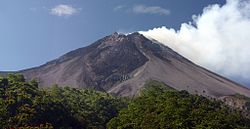 Mount Merapi as seen from Loon Mountain |
The volcanoes in Indonesia are among the most active of the Pacific Ring of Fire. They are formed due to subduction zones between the Eurasian Plate and the Indo-Australian Plate. Some of the volcanoes are notable for their eruptions, for instance, Krakatau for its global effects in 1883, Lake Toba for its supervolcanic eruption estimated to have occurred 74,000 BP which was responsible for six years of volcanic winter, and Mount Tambora for the most violent eruption in recorded history in 1815.
The most active volcanoes are Kelut and Merapi on Java island which have been responsible for thousands of deaths in the region. Since AD 1000, Kelut has erupted more than 30 times, of which the largest eruption was at scale 5 on the Volcanic Explosivity Index, while Merapi has erupted more than 80 times. The International Association of Volcanology and Chemistry of the Earth's Interior has named Merapi as a Decade Volcano since 1995 because of its high volcanic activity.
Japan
Ten percent of the world's active volcanoes are found in Japan, which lies in a zone of extreme crustal instability. They are formed by subduction of the Pacific and Philippine plates. As many as 1,500 earthquakes are recorded yearly, and magnitudes of four to six on the Richter scale are not uncommon. Minor tremors occur almost daily in one part of the country or another, causing slight shaking of buildings. Major earthquakes occur infrequently; the most famous in the twentieth century were: the great Kantō earthquake of 1923, in which 130,000 people died; and the Great Hanshin Earthquake of 17th January 1995, in which 6,434 people died. Undersea earthquakes also expose the Japanese coastline to danger from tsunamis.
Mount Bandai is one of Japan's most noted volcanoes, rises above the north shore of Lake Inawashiro. Mount Bandai is formed of several overlapping stratovolcanoes, the largest of which is O-Bandai forming a complex volcano. O-Bandai volcano was constructed within a horseshoe-shaped caldera that formed about 40,000 years when an earlier volcano collapsed, forming the Okinajima debris avalanche, which traveled to the southwest and was accompanied by a plinian eruption. Four major phreatic eruptions have occurred during the past 5,000 years, two of them in historical time, in 806 and 1888. Seen from the south, Bandai presents a conical profile, but much of the north side of the volcano is missing as a result of the collapse of Ko-Bandai volcano during the 1888 eruption, in which a debris avalanche buried several villages and formed several large lakes.
Nearly a century ago, the north flank of Mount Bandai collapsed during an eruption quite similar to the May 18, 1980 eruption of Mount St. Helens. After a week of seismic activity, a large earthquake on July 15, 1888, was followed by a tremendous noise and a large explosion. Eyewitnesses heard about 15 to 20 additional explosions and observed that the last one was projected almost horizontally to the north.
Mount Fuji is Japan's highest and most noted volcano. The modern postglacial stratovolcano is constructed above a group of overlapping volcanoes, remnants of which form irregularities on Fuji's profile. Growth of the younger Mount Fuji began with a period of voluminous lava flows from 11,000 to 8,000 years ago, accounting for four-fifths of the volume of the younger Mount Fuji. Minor explosive eruptions dominated activity from 8,000 to 4,500 years ago, with another period of major lava flows occurring from 4,500 to 3,000 years ago. Subsequently, intermittent major explosive eruptions occurred, with subordinate lava flows and small pyroclastic flows. Summit eruptions dominated from 3,000 to 2,000 years ago, after which flank vents were active. The extensive basaltic lava flows from the summit and some of the more than 100 flank cones and vents blocked drainages against the Tertiary Misaka Mountains on the north side of the volcano, forming the Fuji Five Lakes. The last eruption of this dominantly basaltic volcano in 1707 ejected andesitic pumice and formed a large new crater on the east flank. Scientists are saying that there may be some minor volcanic activity in the next few years.
Mexico
Volcanoes of Mexico are related to subduction of the Cocos and Rivera plates to the east, which has produced large explosive eruptions. Most active volcanoes in Mexico occur in the Trans-Mexican Volcanic Belt, which extends 900 kilometres (559 mi) from west to east across central-southern Mexico. A few other active volcanoes in northern Mexico are related to extensional tectonics of the Basin and Range Province, which split the Baja California peninsula from the mainland.[16] Popocatépetl lies in the eastern half of the Trans-Mexican Volcanic Belt, which is the seconed highest peak in Mexico after the Pico de Orizaba. It is one of most active volcanoes in Mexico, having had more than 20 major eruptions since the arrival of the Spanish in 1519. The 1982 eruption of El Chichón killed about 2,000 people who lived near the volcano. It created a 1 kilometre (1 mi) wide caldera that filled with an acidic crater lake. Prior to 2000, this relatively unknown volcano was heavily forested and of no greater height than adjacent non-volcanic peaks.[16]
Philippines

The 1991 eruption of Mount Pinatubo is the world's second largest terrestrial eruption of the 20th century. Successful predictions of the onset of the climactic eruption led to the evacuation of tens of thousands of people from the surrounding areas, saving many lives, but as the surrounding areas were severely damaged by pyroclastic flows, ash deposits, and later, lahars caused by rainwater remobilising earlier volcanic deposits, thousands of houses were destroyed.

Mayon Volcano is the Philippines most active volcano. The volcano has steep upper slopes that average 35–40 degrees and is capped by a small summit crater. The historical eruptions of this basaltic-andesitic volcano dates back to 1616 and ranges from Strombolian to basaltic Plinian eruptions. Eruptions occur predominately from the central conduit and have also produced lava flows that travel far down the flanks. Pyroclastic flows and mudflows have commonly swept down many of the approximately 40 ravines that radiate from the summit and have often devastated populated lowland areas.
Taal Volcano has had 33 recorded eruptions since 1572. A devastating eruption occurred in 1911, which claimed more than a thousand lives. The deposits of that eruption consisted of a yellowish, fairly decomposed (non-juvenile) tephra with a high sulfur content. The most recent period of activity lasted from 1965 to 1977, and was characterized by the interaction of magma with the lake water, which produced violent phreatic explosions. Although the volcano has been dormant since 1977, it has shown signs of unrest since 1991, with strong seismic activity and ground fracturing events, as well as the formation of small mud geysers on parts of the island.
Kanlaon is the most active volcano in central Philippines and has erupted 25 times since 1866. Eruptions are typically phreatic explosions of small-to-moderate size that produce minor ashfalls near the volcano. On August 10, 1996, Kanlaon erupted without warning, killing British student Julian Green and Filipinos Noel Tragico and Neil Perez, who were among 24 mountainclimbers who were trapped near the summit.
Kamchatka Peninsula
The Kamchatka Peninsula in the Russian Far East, is one of the most various and active volcanic areas in the world,[17] with an area of 472,300 km². It lies between the Pacific Ocean to the east and the Okhotsk Sea to the west. Immediately offshore along the Pacific coast of the peninsula runs the 10,500 meter deep Kuril-Kamchatka Trench. This is where rapid subduction of the Pacific Plate fuels the intense volcanism. Almost all types of volcanic activity are present, from stratovolcanoes and shield volcanoes to Hawaiian-style fissure eruptions.[17]
There are over 30 active volcanoes and hundreds of dormant and extinct volcanoes in two major volcanic belts. The most recent activity takes place in the eastern belt,[17] starting in the north at the Shiveluch volcanic complex, which lies at the junction of the Aleutian and Kamchatka volcanic arcs. Just to the south is the famous Klyuchi volcanic group, comprising the twin volcanic cones of Kliuchevskoi and Kamen, the huge volcanic complexes of Tolbachik and Ushkovsky, and a number of other large stratovolcanoes. The only active volcano in the central belt is found west of here, the huge remote Ichinsky. Farther south, the eastern belt continues to the southern slope of Kamchatka, topped by loads of stratovolcanoes.
New Zealand
New Zealand contains the world's strongest concentration of youthful rhyolitic volcanoes, and voluminous sheets blanket much of North Island. The earlist historically-dated eruption was at Whakaari/White Island in 1826.[18] Much of the region north of New Zealand's North Island is made up of seamounts and small islands, including 16 submarine volcanoes. In the last 1.6 million years, most of New Zealand's volcanism is from the Taupo Volcanic Zone.
Mount Ruapehu at the southern end of the Taupo Volcanic Zone, is one of the most active volcanoes.[19] It began erupting at least 250,000 years ago. In recorded history, major eruptions have been about 50 years apart,[19] in 1895, 1945 and 1995-1996. Minor eruptions are frequent, with at least 60 since 1945. Some of the minor eruptions in the 1970s generated small ash falls and lahars (mudflows) that damaged skifields.[20] Between major eruptions, a warm acidic crater lake forms, fed by melting snow. Major eruptions may completely expel the lake water. Where a major eruption has deposited a tephra dam across the lake's outlet, the dam may collapse after the lake has refilled and risen above the level of its normal outlet, the outrush of water causing a large lahar. In 2000, the ERLAWS system was installed on the mountain to detect such a collapse and alert the relevant authorities.
The Auckland volcanic field on the North Island of New Zealand, has produced a diverse array of explosive craters, scoria cones, and lava flows. Currently dormant, the field is likely to erupt again with the next "hundreds to thousands of years", a very short timeframe in geologic terms.[21] The field contains at least 40 volcanoes, most recently active about 600 years ago at Rangitoto, erupting 2.3 cubic kilometers of lava.
Chile
Volcanoes of Chile are related to subduction of the Nazca Plate to the east. Villarrica, one of Chile's most active volcanoes, rises above Villarrica Lake and the town of Villarrica. It is the westernmost of three large stratovolcanoes that trend perpendicular to the Andean chain. A 6-kilometer wide caldera formed during the late Pleistocene, >0.9 million years ago. A 2-kilometer-wide postglacial caldera is located at the base of the presently active, dominantly basaltic-to-andesitic cone at the NW margin of the Pleistocene caldera. About 25 scoria cones dot Villarica's flanks. Plinian eruptions and pyroclastic flows have been produced during the Holocene from this dominantly basaltic volcano, but historical eruptions have consisted largely of mild-to-moderate explosive activity with occasional lava effusion. Lahars from the glacier-covered volcano have damaged towns on its flanks.
Antarctica
The southernmost end of the Pacific Ring of Fire is the continent Antarctica,[22] which includes many large volcanoes. The makeup and structure of the volcanoes in Antarctica change largely from the other places around the ring. In contrast, the Antarctic Plate is almost completely surrounded by extensional zones, with several mid-ocean ridges which encircle it, and there is only a small subduction zone at the tip of the Antarctic Peninsula, reaching eastward to the remote South Sandwich Islands.[22] The most well known volcano in Antarctica is Mount Erebus, which is also the world's southernmost active volcano.[22]
The volcanoes of the Victoria Land area are the most well-known in Antarctica,[22] most likely because they are the most accessible. Much of Victoria Land is mountainous, developing the eastern section of the Transantarctic Mountains, and there are several scattered volcanoes including Mount Overlord and Mount Melbourne in the northern part.[22] Farther south are two more well-known volcanoes, Mount Discovery and Mount Morning, which are on the coast across from Mount Erebus and Mount Terror on Ross Island. The volcanism in this area is caused by rifting along a number of rift zones increasing mainly north-south similar to the coast.[22]
Marie Byrd Land contains the largest volcanic region in Antarctica, covering a length of almost 600 miles (960 km) along the Pacific coast.[22] The volcanism is the result of rifting along the vast West Antarctic Rift, which extends from the base of the Antarctic Peninsula to the surrounding area of Ross Island, and the volcanoes are found along the northern edge of the rift.[22] Protruding up through the ice are a large number of major shield volcanoes, including Mount Sidley, which is the highest volcano in Antarctica.[22] Although a number of the volcanoes are relatively young and are potentially active (Mount Berlin, Mount Takahe, Mount Waesche, and Mount Siple), others such as Mount Andrus and Mount Hampton are over 10 million years old, yet maintain uneroded constructional forms.[22] The desert-like surroundings of the Antarctic interior, along with a very thick and stable ice sheet which encloses and protects the bases of the volcanoes, which decreases the speed of erosion by an issue of perhaps a thousand relative to volcanoes in moist temperate or tropical climates.


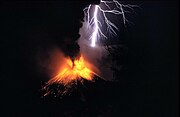


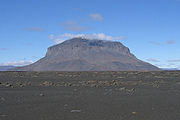

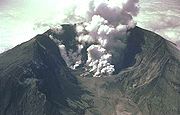

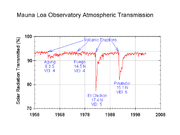
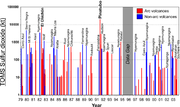

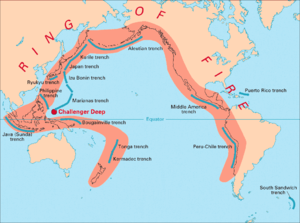



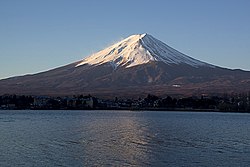



No comments:
Post a Comment